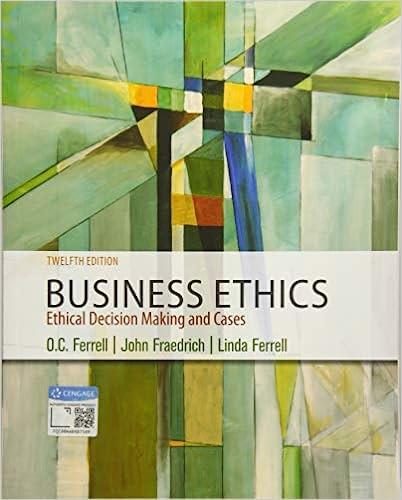The example of Enron shows how an aggressive corporate culture that rewards high performance and gets rid
Question:
The example of Enron shows how an aggressive corporate culture that rewards high performance and gets rid of the “weak links” can backfire. Enron’s culture encouraged intense competition, not only among employees from rival firms but also among Enron employees themselves. Such behavior creates a culture where loyalty and ethics are cast aside in favor of high performance. The arrogant tactics of Jeffrey Skilling and the apparent ignorance of Ken Lay further contributed to an unhealthy corporate culture that encouraged cutting corners and falsifying information to inflate earnings.
The allegations surrounding Merrill Lynch’s and Arthur Andersen’s involvement in the debacle demonstrate that rarely does any scandal of such magnitude involve only one company. Whether a company or regulatory body participates directly in a scandal or whether it refuses to act by looking the other way, the result can be further perpetuation of fraud. This fact was emphasized during the 2008–2009 financial crisis, in which the misconduct of several major companies and the failure of monitoring efforts by regulatory bodies contributed to the worst financial crisis since the Great Depression. With the country recovering from widespread corporate corruption, the story of Enron is once again at the forefront of people’s minds. Andy Fastow has stated that businesspeople are falling into the same trap as he fell into at Enron and believes fraud is “ten times worse” today than it was during Enron’s time.
The Enron scandal has become legendary. In 2005, four years after the scandal, a movie was made about the collapse of Enron called Enron: The Smartest Guys in the Room. To this day, Jeffrey Skilling continues to maintain his innocence. In April 2012, the Supreme Court denied his appeal, claiming that any errors made in the trial were negligible. However, a federal judge later reduced Skilling’s sentence to 14 years. Skilling should be out of prison by the time you read this case. It remains to be seen how he will conduct himself after release and how he will reflect on his role in Enron. Many agree that Andy Fastow has made a contribution by taking responsibility for his misconduct and providing his perspective on preventing accounting fraud. Enron’s auditor, Arthur Andersen, faced over 40 shareholder lawsuits claiming damages of more than \($32\) billion. In 2009, the defunct company agreed to pay \($16\) million to Enron creditors. Enron itself faced many civil actions, and a number of Enron executives faced federal investigations, criminal actions, and civil lawsuits. As for the giant tilted “E” logo so proudly displayed outside of corporate headquarters, it was auctioned off for \($44,000\).
Questions:-
1. How did the corporate culture of Enron contribute to its bankruptcy?
2. Did Enron’s bankers, auditors, and attorneys contribute to Enron’s demise? If so, how?
3. What role did the company’s chief financial officer play in creating the problems that led to Enron’s financial problems?
Step by Step Answer:

Business Ethics Ethical Decision Making And Cases
ISBN: 9781337614436
12th Edition
Authors: O. C. Ferrell, John Fraedrich, Linda Ferrell





